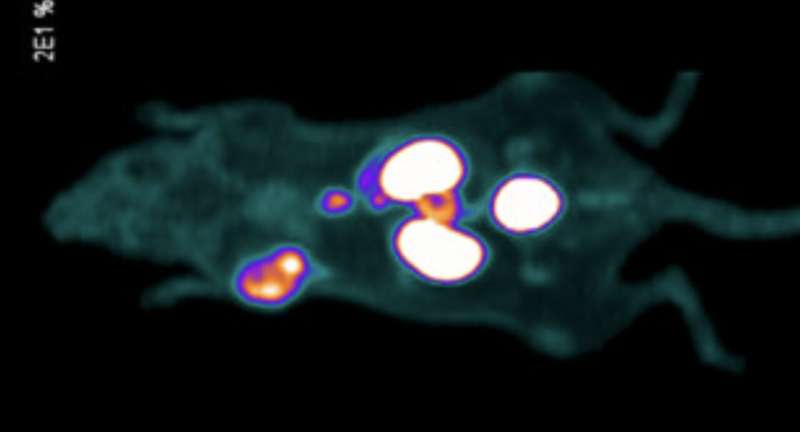The agent uses a single tracer molecule labeled with fluorine-18—a common isotope used in positron emission tomography (PET) scans—for diagnostic imaging. It also provides a one-step, widely accessible solution that would enable combined fluorescence-guided and radio-guided surgery.
“Precision medicine is increasingly being practiced and developed to address the sophisticated treatment methods for diseases like cancer,” says Dr. David M. Perrin, a University of British Columbia chemist and senior author on the paper, published in advance in the Journal of Medical Chemistry.
“Our tracer provides high-resolution visual guidance, but would also allow a surgeon to use a hand-held Geiger counter probe to ‘hear’ areas of high radiation density that would accumulate in cancerous tissue not immediately visible—whether it’s a lymph node, or distant metastasis, or local invasion in the bowel or the gut.”

